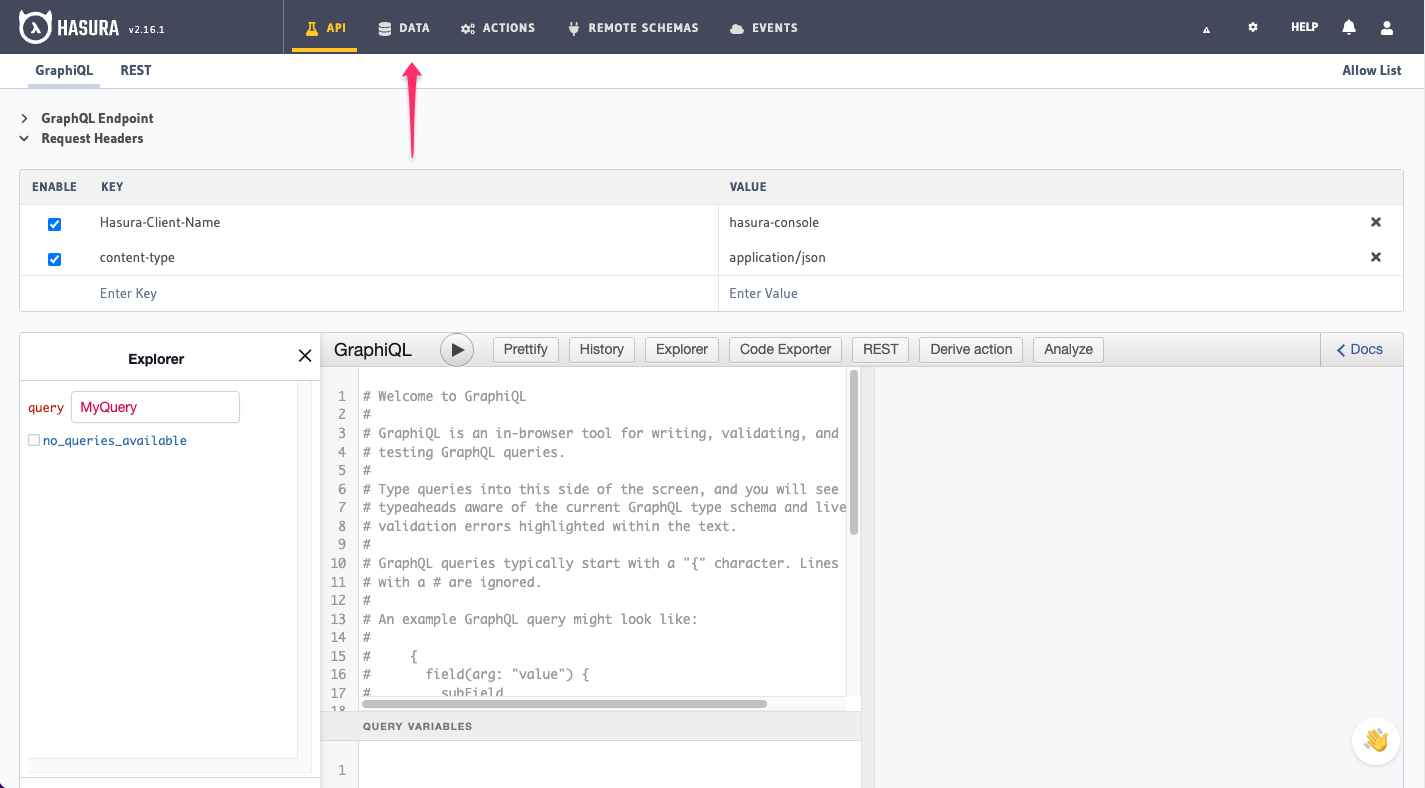Getting Started with Oracle in Hasura Cloud
Introduction
This guide will help you get set up with Hasura Cloud and our Oracle integration.
- Hasura GraphQL Engine
v2.24.0onwards - Hasura supports most databases with standard implementations of Oracle 18.0 and higher including Amazon RDS.
Hasura currently supports queries, mutations (INSERT, UPDATE, DELETE), table relationships, remote relationships and permissions on Oracle.
Note that Hasura doesn't yet support the ability to modify the database schema for Oracle, so the database you connect to should already contain tables and data. You should also ideally have access to it outside of Hasura to modify the schema.
Try it out
Step 1: Create an account on Hasura Cloud and create a new Hasura Project
Navigate to cloud.hasura.io, and create a new Hasura Cloud account.
Once you create a project on Hasura Cloud, hit the "Launch Console" button to open the Hasura Console for your project.

Step 2: Connect to a Oracle database
From the Console, click the Data tab:

Select the Oracle data source driver.
You'll need to click Manage in the sidenav and then Connect Database to bring up the different available agents.
Enter a database display name and the JDBC Connection URL for your Oracle instance. The JDBC connection URL should look like this:
jdbc:oracle:thin:<username>/<password>@<hostname>:<port>:<service-name>
For example:
jdbc:oracle:thin:myuser/[email protected]:oracletest # assuming the default port 1521
jdbc:oracle:thin:myuser/[email protected]:1234:oracletest # assuming Oracle is running on port 1234
Click Connect Database.
Due to the potential variations in drivers, it's crucial to escape special characters used in the password of the
connection string. These include { } % & #. To escape a character, use the appropriate escape sequence based on your
database's driver's documentation.
Step 3: Track tables and run GraphQL API queries
Now that you have successfully connected your Oracle database to Hasura, you can track tables and use Hasura to automatically build a GraphQL API on top of it.
Keep up to date
If you'd like to stay informed about the status of Oracle support, subscribe to our newsletter and join our Discord!